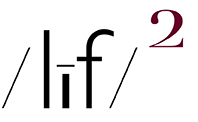all photos (embiggenable)
“When I think back on all the crap I learned in high school, it’s a wonder I can think at all. And though my lack of education hasn’t hurt me none, I can read the writing on the wall.” ~ Paul Simon from the song Kodachrome
THIS SONG LYRIC HAS ALWAYS STUCK WITH me when I think about the idea of going to school-college / university level-for the purpose of learning about how to make good pictures. An idea that, iMo. I believe to be the complete antithesis of how to achieve the goal of making good pictures. That’s cuz, hold onto your hats, I am certain, beyond any doubt, that, in fact, making good pictures cannot be taught. FULL STOP.
For me, this is not a recent conclusion; back in the early-ish day of my commercial photography career, a professor-the same one who brought John Pfahl to my studio for a visit- from RIT’s School of American Crafts / College of Art & Design would bring students from RIT’s School of Photographic Arts and Sciences to my studio on day trips. During those visits I considered it my civic duty to inform those students that, within 5 years of graduation, only 7% of grads would be making a living making photographs. And, to understand that, after learning how to operate a camera, their way around a darkroom (no computers in the photo world at that time), and how not to kill themselves setting up high-powered strobe banks, they would be better served, financially and aesthetically, to get out of school, get a job in some facet of the photography industry, buy ton of film, make a zillion pictures, and, consequently, learn how they see the world.
I am certain that those students were very impressed with my work and studio: nationally-known client work on the walls and in my portfolio. I am also certain that they most likely were more than a little perplexed by the fact, which I drove home quite emphatically, that I had not spent a day, not an hour, not a minute learning anything about photography in a school, workshop, or any other learning institution. Don’t know if anyone ever heeded my advice. But, the simple fact was/is that I figured it all out on my own initiative.
FYI, the only thing I learned from someone else was how to spool 35mm film onto a processing reel; that took all of 5 minutes although it did require quite a bit of practice to consistently get it right.
That written, I did read nearly anything I could get my hands on, photography wise. Primarily, that included popular photo magazines which, sooner than later, I moved away from to read mags that featured photographs, not gear. One notable exception to the magazine focus was a subscription to the Time Life Library of Photography. I ended the subscription after receiving 4 books: The Camera, The Print, Light and Film, and Color. The books were hardbound, beautifully printed, and fairly informative, and, mercifully free from any advice from “experts”.
All of that written, Paul Simon sings that his lack of education didn’t hurt him none. I would suggest that a lack of education ain’t hurt a lot of folks none (to include myself). Like, say, as a notable example, Frank Lloyd Wright: with just a little bit of civil engineering education-no degree-under his belt, he went on to be declared by the American Institute of Architects as "the greatest American architect of all time". In 2000, one of his projects, Fallingwater (I’ve visited many times), was named "The Building of the 20th century" in a "Top-Ten" poll taken by members attending the AIA annual convention in Philadelphia.
In any event, I ain’t agin readin’, writin’ and ‘rithmatic, per se, as long as that educatin’ teaches one how to think. Ya know, so’s yinz can read the writtin’ on the wall.
